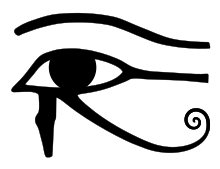Kothar-wa-Khasis
Kothar-wa-Khasis (Ugaritic: 𐎋𐎘𐎗𐎆𐎃𐎒𐎒 Kothar-wa-Khasis Hebrew: כושר וחסיס[1]) is an Ugaritic god whose name means "Skillful-and-Wise" or "Adroit-and-Perceptive" or "Deft-and-Clever". Another of his names, Hayyan hrs yd means "Deft-with-both-hands" or "of skillful hands.[2] Kothar is smith, craftsman, engineer, architect, and inventor. He is also a soothsayer and magician, creating sacred words and incantations, in part because there is an association in many cultures of metalworking deities with magic. The divine name Ka-sha-lu in texts from Ebla suggests that he was known in Syria as early as the late third millennium BCE.
| Deities of the ancient Near East |
|---|
|
| Religions of the ancient Near East |
| Part of a series on |
| Ancient Egyptian religion |
|---|
 |
|
Beliefs |
|
Practices
|
|
Deities (list) |
|
Locations |
|
Symbols and objects
|
|
Related religions
|
|
|
Kothar aids Baʻal in his battles, as recounted in the Baal Cycle, by creating and naming two magic clubs, Yagrush and Ayamur, with which Baʻal defeats Yam. Kothar also creates beautiful furniture adorned with silver and gold as gifts for Athirat. And he builds Baʻal's palace of silver, gold, lapis lazuli, and fragrant cedar wood. One of his significant actions is as the opener of the window through which Baʻal's rains can come and go to fertilize the earth and provide for the continuance of life.
Kothar's abode is Egypt, written in Ugaritic as hkpt (read perhaps as "hikaptah") and derived from the Egyptian ḥwt kꜣ ptḥ, "House of the kꜣ ("double") of Ptah", used in reference to Memphis and paralleled in a poem with kptr, representing Caphtor. Memphis is the site of the Temple of Ptah, the Egyptian god responsible for crafts, whose name means "the Opener".
In his book on the Baʻal Cycle, Mark S. Smith notes that there is a possible pun involved in Kothar's epithet "The Opener". According to Phoenician religion related by Mochus of Sidon, as cited in Damascius's De principiis [3], Chusor, Kothar's name in Phoenician Greek, was the first "opener." Assuming the West Semitic root *pth, "to open," Albright argues that this title represents word-play on the name of the Egyptian god Ptah.
Smith further explains Kothar's double abodes as reflexes of metal or craft trade both from Egypt and from the Mediterranean Sea to Ugarit, as Kothar is imputed to be the divine patron of these skills.
Kothar had a minor role in ancient Egyptian religion, as the mythological builder of chapels for Egypt's more important deities, and has Hephaestus as his Ancient Greek counterpart.
References
- נגה וגיא דרשן, המיתולוגיה הכנענית (מיתוסים 15), הוצאת מפה, תל אביב תשס"ט
- See Morris for ancient text references
- Attridge and Oden, 1981, Philo of Byblos, The Phoenician History: introduction, critical text, transl., notes. The Catholic biblical quarterly - Monograph series. Washington, DC: Cath. Biblical Assoc. of America. ISBN 9780915170081. OCLC 630951999: p. 102-103
Further reading
- Gibson, J. C. L., originally edited by G. R. Driver. Canaanite Myths and Legends. Edinburgh: T. and T. Clark, Ltd., 1956, 19 77.
- Morris,Sarah Daidalos and the Origins of Greek Art. Princeton University Press, Apr. 9, 1995.
- Meeks, Dimitri, and Christine Favard-Meeks. Daily Life of the Egyptian Gods. Translated by G. M. Goshgarian. Cornell University Press. 1996.
- Smith, Mark S. The Ugaritic Baal Cycle. Volume 1: Introduction with Text, Translation & Commentary of KTU 1.1–1.2. Supplements to Vetus Testamentum, Volume LV. Leiden, The Netherlands: E. J. Brill, 1994.